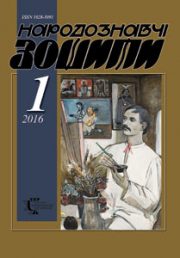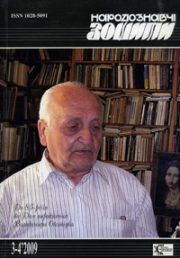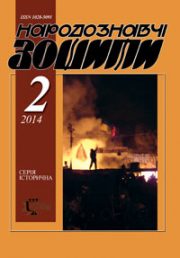The Ethnology Notebooks. 2023. № 3 (171), 671—676
UDK 675:687.01]502/504
DOI https://doi.org/10.15407/nz2023.03.671
ENVIRONMENTAL AND AESTHETIC ASPECTS IN THE DESIGN OF FUR PRODUCTS
SANDYUK Larysa
- ORCID ID: https://orcid.org/0000-0002-4702-4523
- Senior Lecturer at the Department of
- Fine and Decorative Arts and Restoration
- of Vasyl Stefanyk Precarpathian National University,
- 57, Shevchenko st., 76000, Ivano-Frankivsk, Ukraine,
- Contacts: e-mail: larisa.sandyuk71@gmail.com
SANDYUK Volodymyr
- ORCID ID: https://orcid.org/0000-0003-4795-9553
- Associate Professor at the Department of
- Fine and decorative arts and restoration
- of Vasyl Stefanyk Precarpathian National University,
- 57, Shevchenko st., 76000, Ivano-Frankivsk, Ukraine,
- Contacts: e-mail: volodymyr.sandyuk@gmail.com
Abstract. Introduction. The article analyzes the problematic issues of ecology, the state of the environment, the impact of the production of natural and artificial fur on nature; ethical aspects of this industry. The article also compares and alternatives to their use in the modeling industry and ways to address environmental issues. The article describes an innovative approach to fur design, namely ecological design, because such an approach to creating fur models may include the use of new technologies and materials that reduce the environmental impact of production and increase the efficiency of resource use and take into account ethical issues.
The problem of the study is determined by the lack of generalizing developments on this issue. It is also determined by the importance of preserving the environment and promoting humane and ethical treatment of animals. The purpose of the article is to compare the production of natural and artificial fur, the impact on ecology and the environment. The analysis of alternative materials and the latest redesign method as an alternative to the use and production of artificial fur, as well as less humane use of animal fur.
The study found that both the tanning and processing of natural fur and the production and disposal of artificial fur made from synthetic materials, which use petroleum products that are necessary for the production of polymers and take a long time to break down, have an equally negative impact on the environment. The article analyzes the changes taking place in the fashion industry, in particular, the attitude of famous couturiers and fashion trendsetters to the problems of ecology and environmental protection.
The article provides the main examples of design, a new trend in the fashion industry that allows to update and modernize fur collections at lower costs and with rational use of raw materials and resources. The article also gives an example of recycling — the use of fur waste to create new materials. It is noted that the best innovative alternative to fur production is fabrics made of plant fibers that emulate fur and can be produced with less environmental impact and without the use of harmful chemicals.
Keywords: ecology, environment, design, ethics, natural fur, artificial fur, fashion, industry.
Received 26.04.2023
REFERENCES
- Tkanko, Z., & Tkanko, O. (2019). Ecological design in the fashion industry of the early twenty-first century. Bulletin of the Lviv National Academy of Arts, 39, 162 [in Ukrainian].
- Brykalin, V. (2021). A warrior alone in the field: Stella McCartney on big business and its rules. Vogue. Retrieved from: https://vogue.ua/article/fashion/persona/odna-v-pole-voin-stella-makkartni-o-bolshom-biznese-i-svoih-pravilah-20939.html [in Ukrainian].
- Zhurba, I. (2012). Ecologization as a modern philosophy of clothing design. Bulletin of the KNUCaA (KNUKiM), 5 [in Ukrainian].
- Stasiuk, I. Ukrainian brand creates eco-friendly hemp fur coats. Khmarochos. Retrieved from: https://hmarochos.kiev.ua/2018/11/11/ukrayinskiy-brend-stvoriv-ekologichni-shubi-z-konoplyanogo-hutra/ [in Ukrainian].
- Tkachenko, L. (1999). Fashion as an aesthetic phenomenon. The thesis for the academic degree of Candidate of Philosophy. Kyiv [in Ukrainian].
- Shandrenko, O. (2008). The virtual world of haute couture fashion. Art history notes, 15, 143—150 [in Ukrainian].






